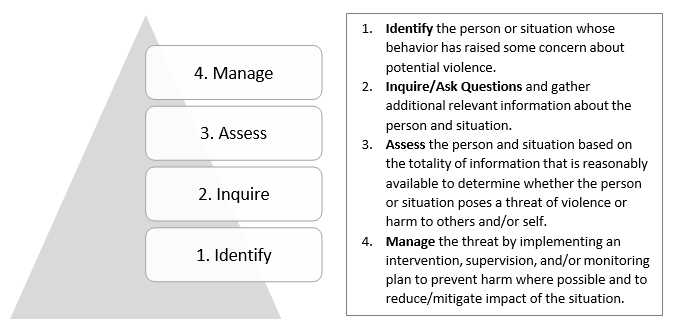NASD is committed to ensuring our community's safety. In addition to the state-mandated safety protocols, training, and drills, NASD has invested significant resources to allow us to proactively meet any potential threats, including;
Emergency training drills
Full-time police officers
Ongoing employee training
Full-time school-based licensed social workers
School Staff are trained at the beginning of each year on identifying and reporting student behavior that may indicate a threat to the safety of the student, other students, school employees, other individuals, school facilities, or the community in accordance with the law, board policy and the standards specified by the state's School Safety and Security Committee.
Threat Assessment Teams are responsible for "the assessment of and intervention with students whose behavior may indicate a threat to the safety of the student, other students, school employees, school facilities, the community or others." Threat assessment teams are comprised of administrators, school psychologists, guidance counselors, and special education case managers. Law enforcement personnel may become involved if a particular case warrants their involvement.
A threat assessment process is not designed to develop a profile focused on a set of traits or characteristics but to evaluate, on a case-by-case basis, whether situations, actions, and behaviors could result in a significant risk to the health and safety of individuals within a school community. In addition to an individualized assessment, these determinations must be made based on reasonable judgment relying on the best available objective evidence to determine the nature, duration, and severity of the risk; the probability that potential injury will actually occur; and whether reasonable modifications of policies, practices, or procedures could mitigate that risk.
It is important to note that the focus of a threat assessment process is to understand the situation and how best to mitigate safety concerns, and it is not the same as a criminal or disciplinary investigative process.

Threat Assessment Team Members
High School
Jon Ortwein
Christina Thrash
Middle School
Michael Lopata
Ashley O’Brien
Lehigh Elementary
Jared Haupt
Shannin Peters
Adrienne Constebader
George Wolf Elementary
Stephen Serensits
Christine Nemeh
Borough
Douglas Sherman
Kelly Waters
Tracy Rolles
Kaitlynn McNally
Moore Elementary
Curtis Dimmick
Sarah Krachie
Heather Shaner
NASD Threat Assessment Team
Joseph Kovalchik
Michelle Schoeneberger
Jon Ortwein
Trina Williams
Curtis Dimmick
Douglas Sherman
Michael Lopata
Michael Alogna
Stephen Serensits
Community Resources
Sometimes it is difficult to decide what constitutes a threat. Community members may feel conflicted when they learn information about a child and what should be considered a threat and reported to the school, police, child's parent, and or Childline. The resources below can offer guidance in making a decision. However, if anyone is a potential danger to themselves or others, do not hesitate to alert someone by calling 911 or using SafetoSay.
